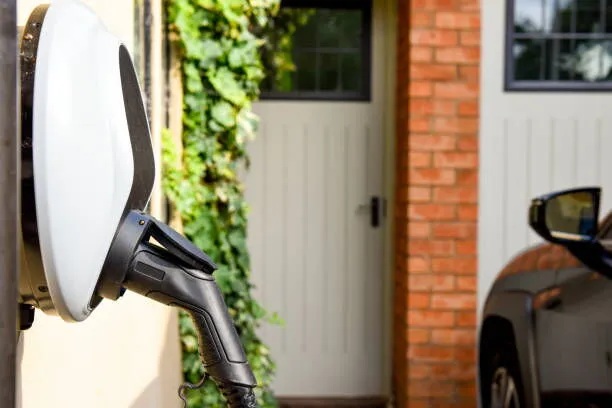Indoor vs. Outdoor China EV Chargers: Which Installation is Right for You?
As electric vehicles (EVs) become more common, selecting the right location for your home charger—indoors or outdoors—is an important decision. Each option offers unique benefits, considerations, and costs. Here’s what you need to know to make an informed choice.
Indoor EV Charger Installation
Installing your EV charger indoors, such as in a garage or enclosed carport, offers several advantages:
- Simplified Wiring: Indoor setups often have easier access to power, reducing installation time and costs.
- Weather Protection: Chargers are shielded from rain, snow, UV exposure, and temperature extremes, which extends their lifespan.
- Convenient Mounting: Garage walls provide natural support for mounting the charger, eliminating the need for a pedestal or additional structure.
While indoor charging offers greater protection, it does require sufficient indoor parking space. Some homeowners opt to mount the charger inside and route the cable outdoors if the vehicle is parked outside.
Outdoor EV Charger Installation
Outdoor charging is ideal when indoor parking isn’t available. However, it requires extra planning:
- Durability: Outdoor chargers are designed with weatherproof casings and watertight seals to withstand rain, snow, and heat.
- Infrastructure Needs: Installation may involve trenching, conduit work, or concrete pads, increasing labor and cost.
- Expert Installation: Licensed professionals are typically needed to ensure compliance with safety codes and local permits.
Despite being more labor-intensive, outdoor chargers offer greater flexibility in location and easy access to parked vehicles.
Pros and Cons: Indoor vs. Outdoor
FeatureIndoor ChargerOutdoor ChargerInstallation CostGenerally lowerPotentially higher due to trenching or pedestalsWeather ExposureFully protectedDesigned to endure elementsDurabilityLonger lifespanMay require more maintenanceAccessibilityIdeal for garage setupsFlexible location near parkingSafetyMinimal environmental riskRequires rugged design and IP-rated protection
Safety and Compliance for Outdoor Charging
Outdoor EV charging is safe if installed correctly. To ensure reliability:
- Use Certified Equipment: Choose a charger with a high Ingress Protection (IP) rating, ensuring resistance to dust and water.
- Avoid Conductive Hazards: Don’t park near large metal objects, which could pose electrical risks in rare fault conditions.
- Inspect Regularly: Check cords and connectors for damage.
- Follow Local Codes: Some municipalities require permits and inspections—always consult local authorities and licensed installers.
Key Considerations for Choosing
- Parking Location: Choose based on where your EV is most often parked.
- Climate: Harsh weather favors indoor installation, but rugged outdoor models can still perform reliably.
- Budget: Indoor chargers tend to be cheaper to install; outdoor setups may need more prep work.
- Charging Habits: Daily charging benefits from convenience and proximity to the parking space.
Which Is Right for You?
- Indoor Chargers are ideal if you have a garage and want long-term reliability with minimal maintenance.
- Outdoor Chargers are perfect for driveway parking, multi-vehicle setups, or homes without garage access.
Conclusion
Both indoor and outdoor EV chargers are safe and effective when installed correctly. Indoor chargers offer greater protection and often lower lifetime costs, while outdoor chargers provide versatility and convenience for a wider range of homes.
Before installing, consult a qualified EV charger installer to assess your space, ensure compliance with local codes, and choose a solution tailored to your lifestyle. The right setup will make charging simple, efficient, and future-ready. Know more about Google SEO Directory





Comments